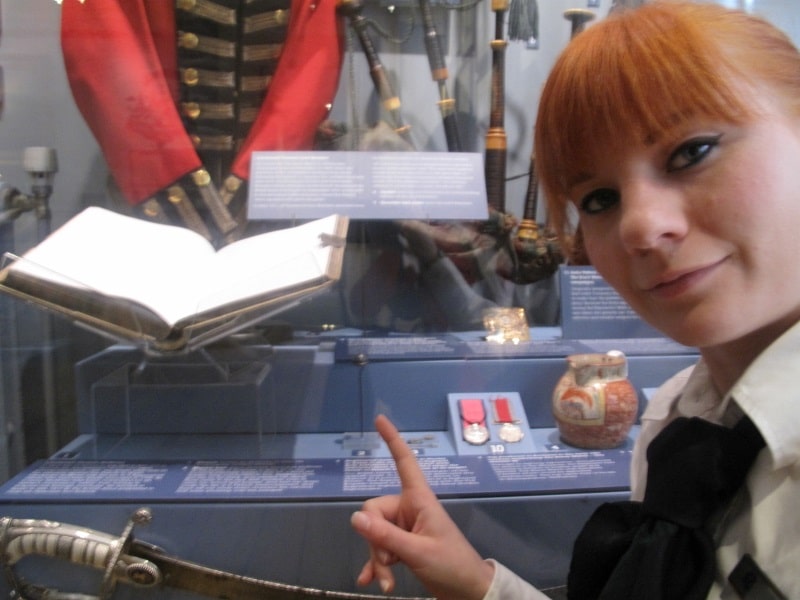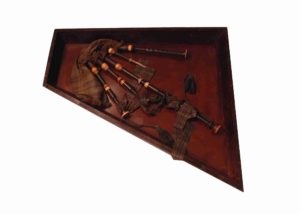Major-General David Stewart of Garth
Just before heading up the stairs to Gallery 4 visitors will see the painting of someone who, on first glance, might not look like a
Home » Blog » Illuminating Objects » Favourite artefacts | Shona Lowerson-Head


Shonagh Lowerson-Head, our learning and audiences officer tells us about her favourite object in the collection.

The musket ball in question was fired during the battle of Toulouse in April 1814 where it struck one Lieutenant Thomas McNiven of the 1st Battalion, Black Watch. Despite the injury that McNiven himself describes as ‘being all but fatal’, he recovered and was able to record his experiences on the battlefield at a later date.
McNiven was carried from the battlefield by Sergeant Ross, ‘a kind old soldier, long habituated to war’. The wounded Lieutenant spent three days in a nearby farm house before he, and the other wounded men were reunited with their fellow British soldiers. McNiven spent a further three months in Toulouse, recovering under the care of a French family, before making his way home in June 1814.
Despite the apparent severity of his wound McNiven evaded the intervention of a surgeon until his return to Britain, where the musket ball, still lodged in his side was eventually remove.
Considering the mortality rate for battlefield wounds and the rudimentary nature of early eighteenth century surgical techniques it is really quite incredible that McNiven lived to tell the tale. If the initial wounding did not prove fatal then the almost inevitable infection would claim the majority of men injured on the battlefield. Furthermore, McNiven encountered further risk when having the lead ball removed months after his initial wounding, presumably after it had already begun to heal. Surgical techniques during the Napoleonic era remained fairly rudimentary with no anaesthetic, no antiseptic and generally poor standards of hygiene. While undergoing surgery at home, rather on the battlefield would certainly have mitigated some of these risks, surgery was not a routine procedure, with infection again being the biggest killer.
From this simple ball of lead we have a gateway to an incredible life of an individual; his experiences, his resilience and endurance on and off the battlefield.
Just before heading up the stairs to Gallery 4 visitors will see the painting of someone who, on first glance, might not look like a

Rosie Waine is the William Grant Foundation Research Fellow at the National Museum of Scotland. Here she writes how the Black Watch Museum & Castle
The Black Watch Museum archive holds a considerable quantity of primary source material relating to the Battle of Loos, 24th September 1915. This event has
Subscribe to Our Newsletter
© The Black Watch Castle and Museum
The Black Watch Regimental Trust is a charitable company registered in Scotland | Charity No: SC005848
